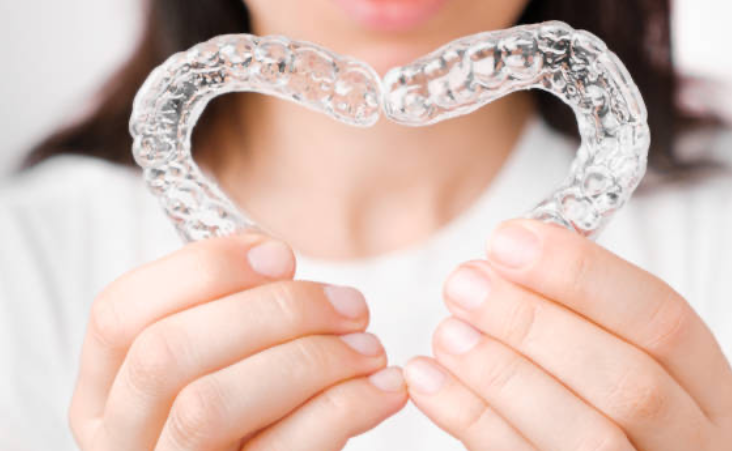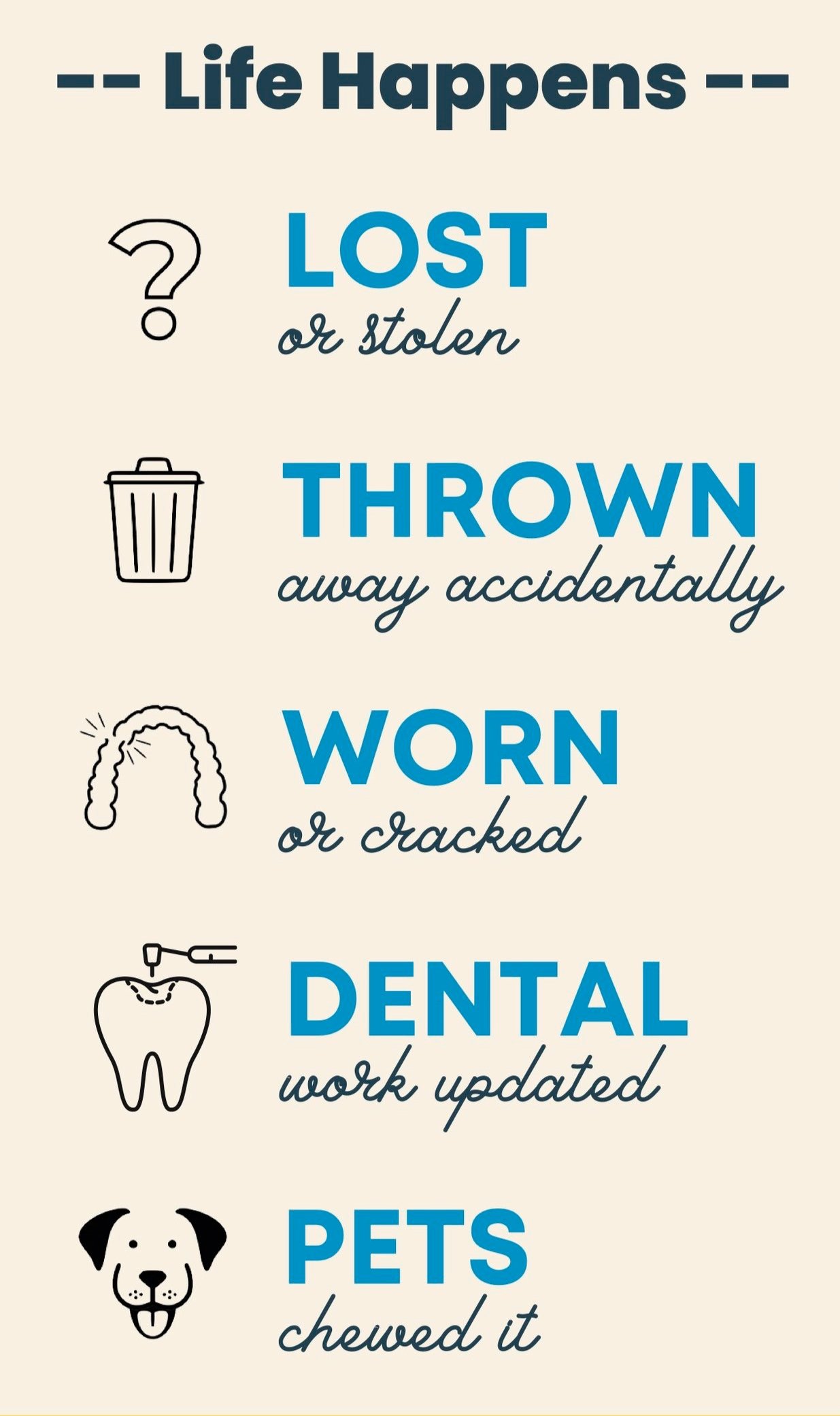Orthodontic Retention
The day you get your braces taken off is cause for celebration! You’re not done just yet, though. Once your teeth have been moved into place, you need a retainer to keep them there. Teeth aren’t just anchored in your jaw bones, which is a good thing because if they were, you wouldn’t be able to move them with orthodontic treatment. Your teeth are held in place by a network of fibers called periodontal ligaments. After your treatment moves your teeth into new positions, it takes awhile for those fibers to stabilize. Even after your periodontal ligaments are adjusted, though, teeth can move throughout your lifetime.
Types of Retainers
Drs. Ross and Laura Pulver use 3 different types of retainers: clear retainers, fixed retainers, and Hawley retainers.
Clear retainers look sort of like clear aligners, but the biggest difference is that they do not move your teeth. They are thin, clear trays that fit snugly over all of the surfaces of your teeth to prevent unwanted movement. They are removable.
Hawley retainers are probably what you picture when you think about retainers if you’re an adult. They are made of acrylic that is molded to the inside of your mouth, and metal wires go around your teeth to hold them in place. They are also removable.
Fixed retainers consist of wires glued to the back of your teeth, usually on your bottom front teeth.
Clear retainers
PROS
These are our preference and are included with your orthodontic treatment.
Since this type of retainer is molded to each tooth, they do the best job at preventing movement.
The thin plastic is almost invisible and many people find them more comfortable, too.
Clear retainers have all the same removability benefits as Hawley retainers – they come out for eating and cleaning, and you can choose to remove them for things like photos if you want.
CONS
Lunchrooms and restaurants are the number one place clear retainers are lost. Since they are clear, they can be easily misplaced if care is not taken to place them back in their retainer case as recommended.
For people who have a tendency to grind their teeth, clear retainers may not last as long before wearing out. However, they do protect teeth from excessive wear from grinding.
Using toothpaste on a clear plastic retainer can scratch the material, so proper care is important.
Hawley retaineRs
PROS
Hawley retainers last for a long time if they’re properly cared for, and since they’re pretty durable, care isn’t difficult.
These types of retainers come in a wide variety of colors, including glittery hues, so those who like personalization can be as stylish as desired. The acrylic doesn’t stain or scratch easily so you’ll probably have the same retainer for years to come.
Being able to remove your retainer for eating and oral hygiene is nice, too. You can clean your Hawley retainer with a toothbrush and toothpaste, or you can use a denture cleaner if you prefer.
CONS
Being able to remove your retainer has downsides, too. Dogs love chewing on Hawley retainers, and at $200 to $300 for a retainer, that’s an expensive chew toy!
This style of retainer is visible in your mouth because the metal wire sits in front of your teeth. Eventually, you’ll probably only need to wear it while you sleep, but if you’re eager for a wireless smile after your braces come off, you may find it a little disappointing to need to wear your retainer all the time.
Feeling your retainer in your mouth will probably take a little getting used to, and you might speak slightly differently at first. Some people find that they produce more saliva while wearing a Hawley retainer.
A retainer that isn’t cleaned properly can grow colonies of bacteria, which is kind of gross to put in your mouth. Make sure you follow all your orthodontist’s instructions to keep things clean and healthy.
Fixed retaineRs
PROS
With a permanent retainer, you don’t have to think about wearing it. It’s not going to get lost, and there’s very little chance that you’re going to damage it.
Other people can’t usually tell you’re wearing a permanent retainer because it’s discretely glued to the backs of your teeth.
Some people find permanent retainers more comfortable, too. There are no pieces to get in the way while you talk or chew, and most of the time, you won’t even think about it being there.
CONS
Permanent retainers stay in your mouth all the time, including while you eat, brush, and floss. Because they don’t come out, they can make oral hygiene a little tricky.
Food particles can get caught in your retainer wire, and if you’re not diligent about brushing after meals, that may contribute to plaque buildup and gum disease.
Flossing with a permanent retainer is sort of like flossing with braces. You’ll need a floss threader to get a proper clean.
Even with a permanent retainer, your teeth may still shift a little bit because the wire is thin and flexible. Movement will be minimal.
Occasionally fixed retainers can become distorted and lead to unwanted tooth movement.
Some people have a hard time adjusting to fixed retainers and always notice them with their tongue.
Retainers are for life
〰️
Retainers are for life 〰️
Retainers are for life
To maintain the beautiful smile you worked so hard for throughout your treatment, you’ll have to commit to a long-term retention plan.
We know that LIFE HAPPENS. We have seen people LOSE or THROW AWAY their retainers accidentally. They may become WORN or CRACKED over time or new DENTAL WORK can preven them from fittting properly. We have even heard of PETS chewing on retainers! To provide peace of mind and help you protect your investment, we offer our patients 2 options for extra retainers at a reduced cost.
6 Year Retainer Program
Up to 4 replacement retainers every 12 months
Program cost is $675 or 3 payment of $225
$20 copayment per retainer
Extra Set of Retainers
Additional set of retainers provided at the end of treatment
$300 due at debond



